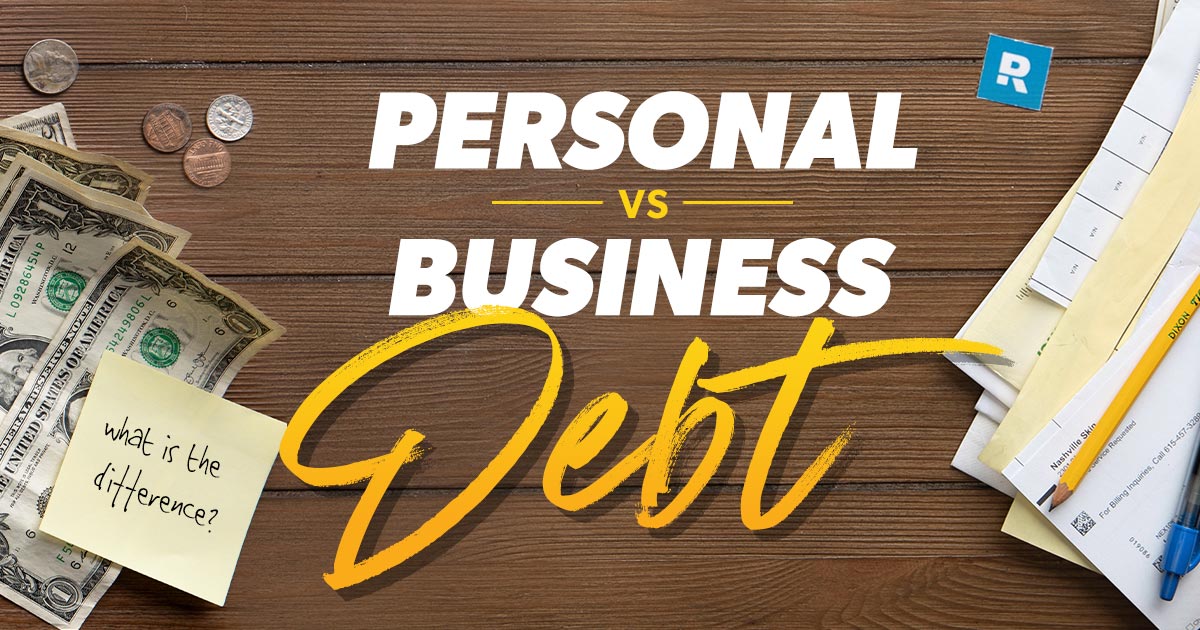Business Debt and Personal Debt:
Understanding How It All Works
Understanding How It All Works
Introduction:
Debt is a common aspect of both personal and business finances. However, it's important to understand the distinctions between the two and how they impact individuals and businesses. This article aims to clarify the concepts of business debt and personal debt, highlighting their differences and exploring how they function within their respective contexts.
Personal Debt:
Personal debt refers to the financial obligations an individual incurs in their personal capacity. This can include mortgages, credit card debt, student loans, car loans, and personal lines of credit. Personal debt is typically used to finance personal expenses, such as housing, education, transportation, and consumer purchases.
Business Debt:
Business debt, on the other hand, pertains to the financial obligations incurred by a business entity. This includes loans, lines of credit, and trade credit used to fund business operations, purchase inventory, invest in assets, or expand the business. Business debt is separate from personal debt and is tied directly to the business entity rather than the individual owner's personal finances.
Liability and Responsibility:
One crucial distinction between personal and business debt is liability and responsibility. In personal debt, the individual is personally liable for the debt and responsible for repayment. If the individual defaults on their personal debt, creditors may pursue legal action, seize assets, or negatively impact the individual's credit score.
In the case of business debt, the liability primarily rests with the business entity itself, such as a corporation or limited liability company (LLC). Although business owners may provide personal guarantees or collateral to secure business loans, their personal assets are typically shielded from business creditors in case of default. However, individual owners should carefully review loan agreements and understand their personal liability obligations.
Creditworthiness and Collateral:
Creditworthiness plays a significant role in personal and business debt. Lenders evaluate an individual's credit history, income, and debt-to-income ratio when assessing personal creditworthiness. For businesses, lenders consider the business's credit history, financial statements, revenue, and the owner's personal creditworthiness, especially for small businesses with limited financial track records.
Collateral is another aspect related to debt. In personal debt, collateral can include personal assets like a house or a car, which serve as security for the loan. In business debt, lenders may require collateral such as business equipment, inventory, or accounts receivable. However, not all business loans require collateral, particularly unsecured business loans or lines of credit.
Tax Implications:
Personal and business debt also differ in terms of tax implications. The interest paid on personal debt, such as mortgages or student loans, may be tax-deductible in certain circumstances, providing potential tax benefits for individuals. Conversely, business interest expenses are typically tax-deductible for businesses, reducing their taxable income.
Conclusion:
Understanding the distinctions between personal debt and business debt is crucial for individuals and business owners alike. While personal debt directly affects an individual's financial well-being and creditworthiness, business debt is tied to the business entity and generally offers more protection to individual owners.
By recognizing the nuances between these types of debt, individuals and business owners can make informed decisions, manage their financial obligations effectively, and navigate the complexities of borrowing in both personal and business contexts.





0 Comments